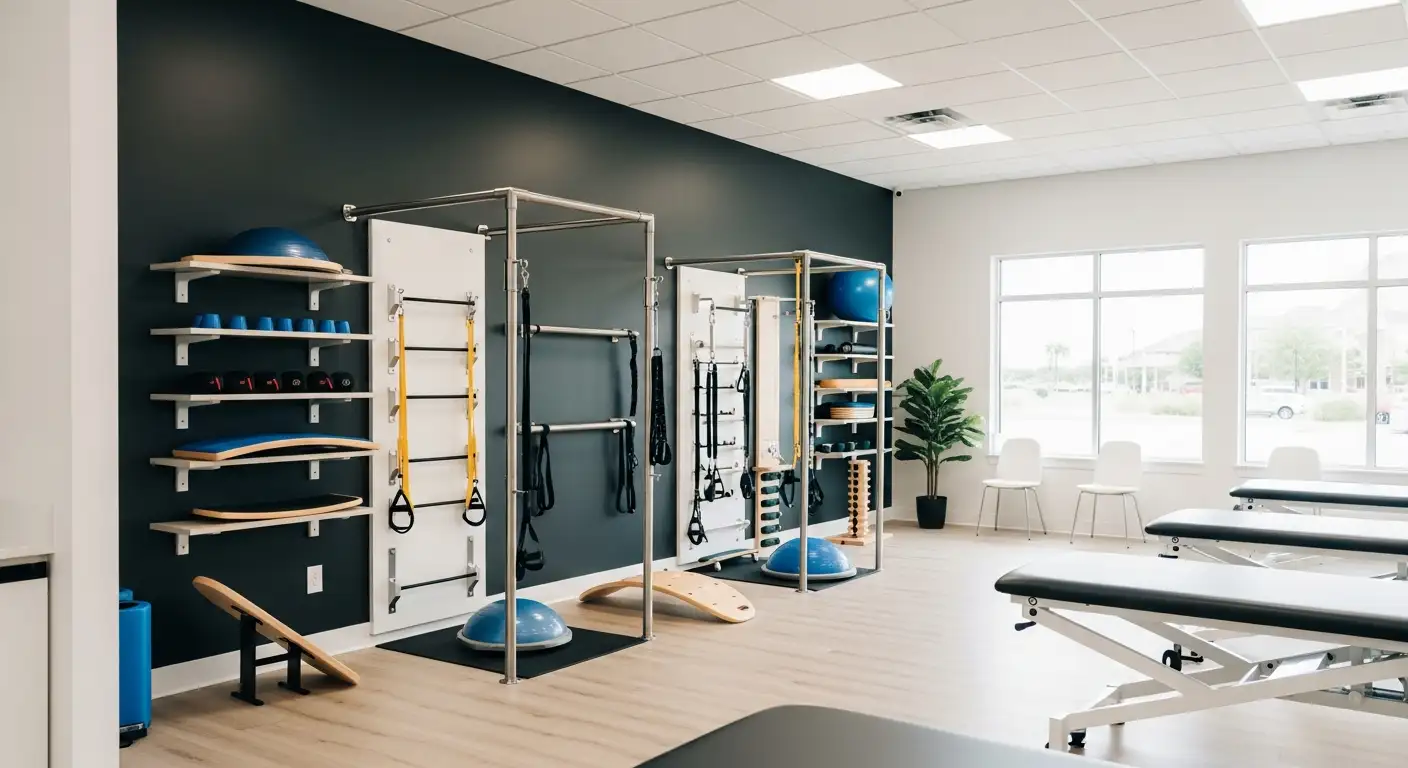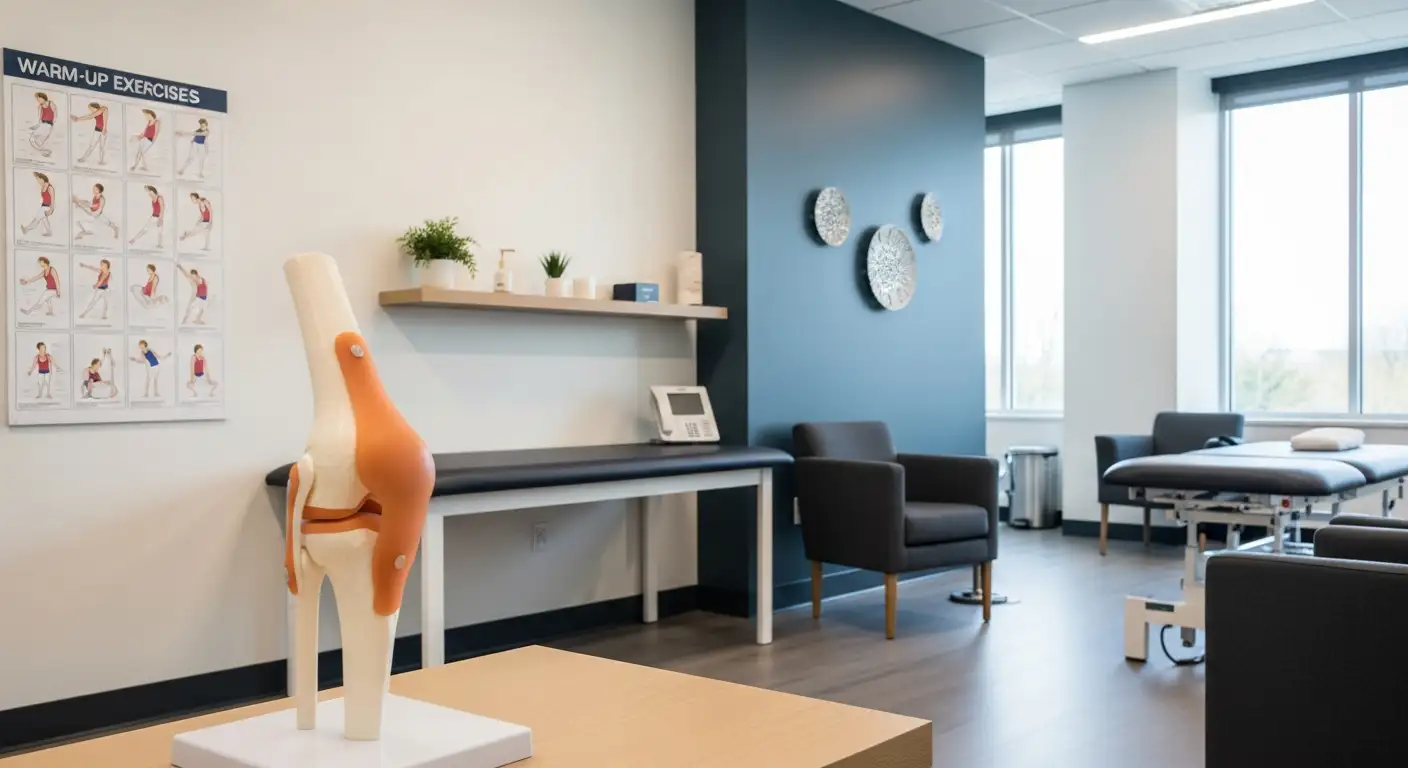Understanding Rectus Femoris Injuries
Rectus Femoris Muscle Overview
The rectus femoris muscle is a vital part of the quadriceps femoris group, situated in the anterior compartment of the thigh. It plays a dual role as both a hip flexor and a knee extensor, making it crucial for various movements, especially those common in sports involving explosive actions. Understanding the anatomy and function of this muscle helps in identifying the implications of a rectus femoris tear lump and its impact on physical performance.

Common Causes of Injury
Among the quadriceps muscles, the rectus femoris is the most frequently strained. Several factors contribute to this susceptibility, including its anatomical design, as it crosses both the hip and knee joints. Additionally, the muscle is composed of a high percentage of Type II fibers, which are more prone to injury during intense activity. Other contributing factors include complex musculotendinous architecture and muscle fatigue, which often lead to acute muscle injuries [1].
In professional football (soccer) and rugby, rectus femoris injuries are particularly problematic. They lead to a higher number of missed games each season compared to other muscle injuries, such as those affecting the hip adductor, hamstrings, and gastrocnemius muscles. The rectus femoris stands out as the most commonly injured muscle within the quadriceps complex [2].
Summary of Common Causes
FactorDescriptionJoint CrossThe muscle crosses both hip and knee joints, increasing strain potential.Muscle Fiber CompositionHigh percentage of Type II fibers predisposes it to strain during sudden motions.Musculotendinous ArchitectureComplex structure can lead to injury under stress.Muscle FatigueFatigued muscles are more susceptible to injury, especially in sports settings.
Awareness of these causes is essential for prevention and management strategies regarding knee pain, especially related to the rectus femoris tear lump. Understanding this foundation allows individuals to take proactive steps in their physical activities to mitigate risk. For further insights into related knee issues, see our articles on my knee feels like it needs to pop but wont and why does my knee lock up.
Symptoms and Diagnosis
Understanding the symptoms and diagnostic techniques associated with a rectus femoris injury is essential for effective treatment and management. Recognizing these signs early can contribute to better outcomes.
Recognizing a Rectus Femoris Injury
The rectus femoris is one of the quadriceps muscles, and an injury to this muscle can cause a variety of symptoms. Patients with acute proximal rectus femoris avulsion injuries typically present with:
These symptoms can result from overuse or explosive loads on the muscle, such as during kicking or sprinting [3].
For individuals experiencing these symptoms, understanding whether they fall into one of several injury grades is important.
GradeDescriptionSymptomsIMild strainMinor pain, slight swellingIIModerate strainModerate pain, swelling, some bruisingIIISevere strain/ruptureSevere pain, significant swelling, audible 'pop', reduced range of motion
Diagnostic Techniques
Diagnosing a rectus femoris injury can be challenging. Diagnosis may sometimes be missed, leading to delayed treatment. The most effective diagnostic tests are:
A careful history and physical examination are also crucial in the diagnosis process. In cases where conservative treatment does not produce improvement, surgical repair may be considered, particularly for patients with grade III rectus femoris muscle lesions and a gap with hematoma [5].
Awareness of these symptoms and understanding the appropriate diagnostic methods can significantly improve the management of a rectus femoris tear lump. For further information on knee-related issues, explore articles on why does my knee lock up and my knee feels like it needs to pop but wont.
Treatment Options
Addressing a rectus femoris tear lump involves exploring various treatment approaches. Effective management can ensure a full recovery and a safe return to pre-injury activities.
Non-Surgical Approaches
Non-surgical treatment options are often the first line of defense for rectus femoris injuries. Initial management typically includes:
Conservative treatments have shown success in treating myotendinous injuries. In a study involving multiple cases, patients who received non-operative treatment had a mean return to sport (RTS) of about one month, significantly faster than those requiring surgery PubMed Central.
Treatment TypePurposeDescriptionImmobilizationPrevent further injuryUsing braces or supportsCryotherapyReduce inflammationIce packs applied several times a dayAnalgesicsAlleviate painNonsteroidal anti-inflammatory drugs (NSAIDs)
Surgical Interventions
Surgery is considered when conservative approaches fail or if the injury is severe, such as a complete rectus femoris tear. Surgical options include:
Studies have indicated that surgical interventions can be effective for athletes with moderate to high functional demands or those experiencing persistent pain that does not improve with non-operative treatment. Following surgical repair, patients typically undergo physiotherapy to facilitate recovery and ensure they can safely return to sports. Immobilization using a knee extension splint is common for six weeks post-surgery for optimal healing [5].
Surgical OptionIdeal CandidatesRecovery DetailsPrimary Surgical RepairGrade III injuriesPost-surgery physiotherapy requiredMuscular Suture TenodesisPersistent symptoms6 weeks of immobilization, followed by therapy
Both surgical treatments aim for a return to pre-injury sports activity, although recurrence rates for re-injury can be as high as 15% to 60% within one year NCBI. A comprehensive approach tailored to the individual's specific injury and lifestyle can facilitate recovery from a rectus femoris tear lump.
Recovery Process
The recovery process for a rectus femoris tear involves two critical phases: the initial recovery phase and rehabilitation exercises. Both are essential for ensuring proper healing and preventing future injuries.
Initial Recovery Phase
Immediately following a rectus femoris injury, the initial recovery phase plays a vital role in minimizing further damage. This phase emphasizes resting the affected limb, which helps prevent the progression of the injury. Recommended practices include:
The knee of the injured leg should be positioned in 120° of flexion within the first 10 minutes post-injury to minimize muscle spasms and hemorrhage [1].
Rehabilitation Exercises
Once the initial recovery phase has concluded, rehabilitation exercises can commence, typically around day 5 post-injury. The rehabilitation plan should be gradual and tailored to the individual's recovery progress, focusing on strengthening and flexibility. Key stages include:
Timeline for Recovery Exercises
To visualize the recovery timeline, refer to the table below:
Days Post-InjuryRecommended Activities1-4Rest, Ice, Compression, NSAIDs5-10Start with Isometric Exercises10-20Introduce Dynamic Resistance Exercises20-30Begin sports-specific drills (Running)30+Return to full activities gradually
After completing a structured rehabilitation program for about six weeks, individuals may return to sports with light intensity and progressively increase their activity levels [6]. Focus on appropriate stretching and strengthening practices going forward to maintain knee health and function. For additional information on related knee issues, see our pages on knee pain and dislocated kneecap pictures.
Prevention Tips
Preventing injuries to the rectus femoris muscle is critical for athletes and active individuals. By implementing specific strategies, one can reduce the likelihood of developing a rectus femoris tear lump and maintain overall knee health.
Avoiding Rectus Femoris Injuries
To minimize the risk of sustaining a rectus femoris injury, individuals should consider the following precautions:
Strengthening and Stretching Practices
Incorporating both strength training and stretching can greatly benefit the rectus femoris muscle and the surrounding areas. Here are some effective practices:
TypePracticeDescriptionStrengtheningQuadriceps ExercisesExercises like the resistance band leg press can strengthen the quadriceps, including the rectus femoris. Best exercise for hamstringsStrengtheningEccentric Strength TrainingFocus on slow lowering during leg extensions to build strength specific to the rectus femoris, particularly effective in sports where explosive contractions occur.StretchingStatic StretchingPerform gentle stretches such as the standing quadriceps stretch to increase flexibility. Hold each stretch for at least 15-30 seconds.StretchingDynamic StretchingActivities like high knees can warm up the muscles dynamically, preparing them for physical activity.
Regularly engaging in these practices will help maintain muscle health and flexibility, potentially preventing injuries. Additionally, individuals may want to consult resources for appropriate hyperextension knee brace options or learn more about common knee issues, such as why the knee might lock up [7].
By focusing on preventive strategies and incorporating strengthening and stretching exercises, individuals can better protect themselves against rectus femoris injuries and enhance overall knee stability.
Prognosis and Return to Activities
Recovery from a rectus femoris tear lump involves understanding the injury's grading and the appropriate process for returning to sports.
Grading of Injuries
Injuries to the rectus femoris are typically graded based on severity. The grading system includes:
GradeDescriptionGrade IMild strain, with minimal muscle damage and no significant loss of strength.Grade IIModerate strain, with partial muscle tears and noticeable loss of strength.Grade IIISevere strain with a complete tear, often presenting a gap with hematoma.
Patients with grade III rectus femoris muscle lesions who do not show improvement with conservative treatment may require surgical intervention. This procedure is often followed by postoperative physical therapy to facilitate a successful return to sports activity. The initial treatment typically includes immobilization, cryotherapy, and analgesia for pain management [5].
Gradual Return to Sports
A careful approach is essential when returning to sports following a rectus femoris injury. There is a significant risk of re-injury, particularly in the first two weeks after a player resumes sports activities. Optimal regain of tensile strength is critical to preventing severe setbacks [8].
The recovery process involves several stages:
For more insights on managing knee conditions, consider reading about my knee feels like it needs to pop but wont or exploring effective rehabilitation with quad strain rehab exercises.
References
[2]:
[3]:
[4]:
[5]:
[6]:
[7]:
[8]:





